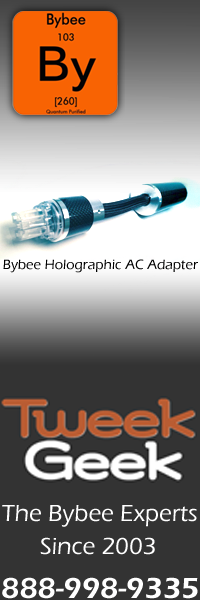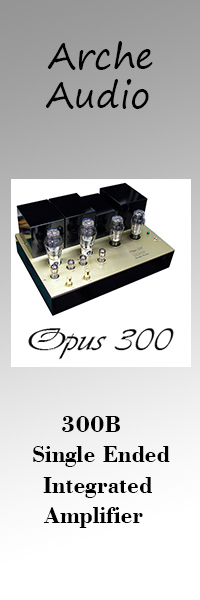YBA’s Passion 1000 Mono Amplifiers
| “Tweakers Paradise” |
| YBA‘s Passion 1000 Mono Amplifiers |
|
October 2003 |
|
Marshall Nack |
|
Specifications:
Solid-state mono-block power amplifier
Output power at 1kHz: 240Wpc into 8 ohms
380Wpc into 4 ohms
Input impedance: 47k ohms
Sensitivity: 1.2v for 240W into 8 ohms
RCA and XLR inputs
Two pairs of output binding posts with different damping factors
Weight: 143 lbs each
Dimensions: 19” W by12” H by 19” D
Serial #APF602A/B
Price: $16,000/pair
Phlox Electronique, BP.
US Distributor:
Audio Plus Services
PO Box 3047
Plattsburgh, NY 12901
Telephone: 800 663-9352
Website: www.audioplusservices.com
This is my first in-home encounter with a denizen of the super amp category. I wish you all to have such an experience at some point. There’s no doubt about it: from the first few notes, you know you’re playing in the major leagues. The ground shifts and suddenly you’re in unfamiliar territory. Many issues that have been dogging you are gone and new sonic delights are apparent. Of course, as I got familiar with the sound of the YBA Passion 1000s, other issues were evident, but these were minor and more easily dealt with compared to the old demons. Setup The Passion 1000s conform to the old school of component cosmetics. Nothing ostentatious or flashy here, just a huge block of black brushed aluminum. The attractive indicator light on the front, with the backlit YBA logo, is a switchable VU-meter and gives output level readings. If you turn it off it takes people awhile to register that there’s two big black boxes with wires coming out of them sitting next to the speakers. Then there’s the inevitable “What’s that?” The rear panel sports one balanced and one RCA input, an IEC for a detachable power cord, and an On/Off switch. Two sets of speaker binding posts are provided with different damping factors. While I would like to see heavier, more secure, binding posts, one thing I can’t imagine seeing is a heavier, more inert chassis. The knuckle rap test yielded only a dull thud with no ringing whatsoever. Frankly, I was intimidated by each amp’s 143 lb weight. I’m sure the four double C, custom-designed and hand-made transformers in each amp contributed most of that weight along with the separate casing of non-magnetic stainless steel. Each of those transformers has individual, built-in power conditioning. The 1000s were situated on the floor beside each speaker on its three integral feet. No special footers or amp stands were attempted. If you turn the amps off for any length of time I’m told they’ll need at least 24 hours to strut their stuff again. During the time I was seriously listening the amps were left on 24/7, and this was reflected in my inflated electric bill. The 1000s got only slightly warm to the touch, and have very modest heatsinking. The Power of Initial Transients I’ve been listening to a new, highly controversial and unconventional performance of Rimsky Korsakov’s Sheherazade by Valery Gergiev and the Kirov Orchestra [Philips 289 470 840-2]. We’ve all heard more than enough of this war-horse. However, since I’ve been impressed with many Gergiev and Kirov Orchestra recordings, I was curious about how these guys would interpret it. The orchestra plays excellently and, sure enough, Gergiev takes some liberties with the tempos, playing passages either slower or faster than expected in order to enhance the dramatic effect. This works for me with this epitome of romantic composition. Plucked strings come across particularly vividly. From an audio point of view, what happens with the 1000s in the system that will really bowl you over is the outstanding reproduction of crescendos. Huge tidal waves of sound come crashing over you. These amps have enormous headroom and extend the dynamic range between ppp and fff, and yet always manage to maintain their composure. Those crescendos progress smoothly and the sound quality remains constant. To top it off, there is abundant musical weight. Now this is unparalleled performance in my experience. Transient power and fullness are key points of the 1000s. Every time I swapped amps and came back to the 1000s, the first thing I’d notice is the speed and sheer power of the initial transient. The next thing I’d notice is the extra support underpinning the trailing sounds. Let’s talk about transients for a bit. I’ve noticed that most amps with good transient response tend to put the treble out slightly ahead of the mid and bass frequencies. This leading treble edge soups up definition and makes images pop out more, giving the stage a little extra sparkle. But this is not what happens in nature: sounds are instantly present and all frequencies are heard together with no artificial edge definition. The 1000s manage to do it this way. As I said, you immediately notice this frequency coherency underpinning everything right at the start of the wave front, and it is maintained as long as it needs to be. How the 1000s accomplish this is partially due to a little rise in the upper bass/lower mid range regions. There’s a pleasant little hump there. Also responsible is the huge amount of current these amps put out. Watts Ain’t Everything We tend to focus on the wattage rating of amplifiers. I’m positing that a case may be made for the amperage spec being more indicative of how an amp performs dynamically. Yves-Bernard Andre, the designer, agrees, and built the Passion 1000s accordingly, with an amazing 480 amps of current output. They may be only(!) 240 watts a side, but they are the most authoritative amps I’ve come across, and I’ve heard amplifiers with higher wattage ratings. Whether it’s the amps or the watts responsible, the headroom of the 1000s is essentially unlimited. Fortunately, my reference EgglestonWorks Rosas were up to the challenge. The 1000s were ruthless in how they treated the Rosas. You knew the Rosas weren’t gonna do anything the 1000s didn’t want them to do, especially in the bass region. The Rosas were putting out more bass energy and better bass quality than ever. They almost sounded like a different speaker in this regard. The drivers stopped and started faster, with more precision and much less overhang. Response time seemed to have been halved. It wasn’t as if the tonal balance was dark. Other than that bit of extra weight, the 1000s frequency response was basically flat, with no humps or suck-outs. The treble has less body than the bass and mids, and so it has a slightly different quality. The treble is best described as neutral and accurate, with good extension, while the bass and mids are a bit full and warm. To a very high degree, telltale solid-state artifacts were absent in the bass and mid-range. There is nothing anemic or thin here: beefy is the more apt description. The effect is similar to gazing upon someone who goes to the gym a lot, the ones who do weight training, not the ones into aerobics. They are thick with lots of body mass, and everything is firm. The Soundstage The soundstage is neither forward nor recessive. For you analytical types, the audible differences in the soundstage from varying source material was unprecedentedly obvious. With a first-rate LP, the dimensionality and precision, not to mention palpability, were staggering. Put on one of those Toshiba EMI LPs and instruments pop out like the best of the Mercury LPs, but with really good timbre and credibility (unlike most of the Mercurys). The stage was so solid and stable with these LPs that I had to question why it wasn’t so with my digital front-end. Chalk this up to the massive step-up in resolution the 1000s provided. These amps were unfazed by anything I threw at them, and they simply outclassed my previous electronics. Sometimes it’s the small events that give away the quality of a component. On Dance of the Night Creatures [Mapleshade MS 06032], listen to track two, “Passion Flower”. A few seconds into the piano intro, you hear trombonist Thurman Green blowing out his mouthpiece over on the far left. Then he walks to just left of center and begins playing the tune, gradually settling into dead center. Admittedly, all this has nothing to do with the music, but it sure goes a long way to enhancing the realism and naturalness of the presentation. Ah, life is good! About the only criticism I can throw at the Passion 1000 is in comparison to my reference tube amps. The 1000s do almost everything better. Only in the areas of overtone production and a certain kind of micro dynamic agility do they come up short. The Von Gaylord Audio (formerly Legend Audio Design) Nirvana tube amps and the Master Sound 845 mono-blocks have the ability to make instruments bend and weave and develop curves in the soundstage. They bring a definite human quality to the presentation. The 1000s populate a soundstage of admittedly greater dimension, with rock-solid images that are locked in space. And there’s the rub: the stage has a foursquare quality compared to the tube amps. Those images seem to be at attention, with their backs straight up, somewhat static. Please note that I find this to be a shortfall of just about every solid state amp I’ve heard, except the new darTZeel NHB-108 model one (stay tuned for the review). Other Wires Harmonic Tech Magic One and Kharma Grand Reference interconnects gave good results. Best was a combination of the two, with the HT connecting the DAC to pre-amp, and Kharma connecting pre-amp to the Passion 1000s. The Kharmas have a wonderful openness, dynamic agility and treble extension that at times could get a bit out of control. That’s where the HT Magic One was the perfect offset to keep the treble in line and also add a little extra body. Shunyata Lyra, HT Magic Woofer and Kharma Grand Reference speaker wires all sounded great. The amps require nothing special in the way of setup or tweaking. They performed reliably from day one. Use good quality wires and try to keep everything off their tops. At one point I put a VPI Brick on top and the sound deteriorated noticeably. Conclusion The YBA Passion 1000 is the first amp I’ve encountered that presents realistic musical weight, fullness and dynamic slam. Lightning speed, frequency coherency and superb control over the speaker drivers, coupled to that weight and slam factor caused visitors to respond immediately with smiles and involvement. Like some of those good-old comfort foods, these massive, imposing amplifiers were reassuring: you knew they could handle anything you threw their way. The matching YBA Passion pre-amp and also my reference Von Gaylord Audio LAD-L2, a hybrid tubesolid state design, saw duty with the 1000s. I’ve been told this best of breed solid state amp will find it’s perfect mate with an all-tube pre-amp, like the Lamm LL2. Finally, I have to mention the synergy among the Passion 1000s, EgglestonWorks Rosas and Kharma Grand Reference speaker cables. When these Kharma wires arrived mid-review, something very special developed that generated almost universal “that’s the best sound I’ve ever heard” responses. (Full review coming soon). For those people who like to travel first class, the YBA Passion 1000 is a top recommendation. |
|
|
Stereo Times Masthead
Publisher/Founder
Clement Perry
Editor
Dave Thomas
Senior Editors
Frank Alles, Mike Girardi, Key Kim, Russell Lichter, Terry London, Moreno Mitchell, Paul Szabady, Bill Wells, Mike Wright, Stephen Yan, and Rob Dockery
Current Contributors
David Abramson, Tim Barrall, Dave Allison, Ron Cook, Lewis Dardick, Dan Secula, Don Shaulis, Greg Simmons, Eric Teh, Greg Voth, Richard Willie, Ed Van Winkle, and Rob Dockery
Music Reviewers:
Carlos Sanchez, John Jonczyk, John Sprung and Russell Lichter
Site Management Clement Perry
Ad Designer: Martin Perry






Be the first to comment on: YBA’s Passion 1000 Mono Amplifiers